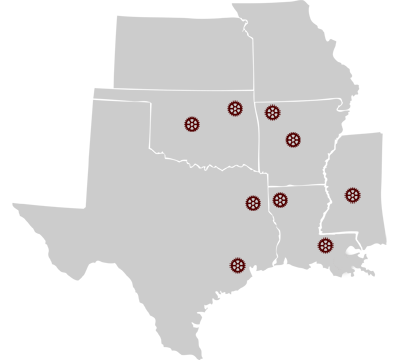TIA Portal Service 1
This course (SCT-PTTIAS1A) is designed for "first responders" to industry operations utilizing Siemens S7 automated control systems.
Maintenance technicians, electricians, supervisors, and others, who need an understanding of their Siemens control system, should attend this course to maximize line uptime.
This course also provides a great platform for those new to automation systems and state-of-the-art industrial controls.
2.6 CEUs (Continuing Education Credits)
PRICE: $3,350.00
PLEASE NOTE: If training in S7 PLC programming is required, please consider the SIMATIC TIA Portal Programming 1 course.
Prerequisites
- MS Windows Expertise
- Intro to PLCs and Languages - Online Instructor-Led course (S7OILPLCI1B)
This first-level service course teaches the basic S7 system concept, hardware configuration, and parameterization, S7 software (SIMATIC TIA Portal) basics, and an overview of programming fundamentals. Human Machine Interface (HMI) and PROFINET IO basics are also included.
Numerous hands-on exercises using a Totally Integrated Automation (TIA) plant model reinforce practical experience and theoretical knowledge. The TIA plant model consists of an S7-1500 automation system, ET200SP distributed I/O, SIMATIC Comfort Panel, and a conveyor model.
Students experience and learn TIA concepts and gain an understanding of the relationships between key industrial automation components. Upon completion of the course, students are able to utilize STEP 7 tools, and techniques to accurately recognize, diagnose, and remedy control system faults, reducing costly downtimes.
Objectives
Upon completion of this course, the student shall be able to:
- Use standard STEP 7 tools and methods for Testing, Diagnosing, and Correcting hardware & software problems in a running program.
- Operate, Monitor, & Maintain components of a typical SIMATIC TIA system.
- Perform basic hardware assembly, cabling, wiring, and testing.
- Establish PLC communication with multiple technologies.
- Retrieve, Archive, and Download S7 programs.
- Address and wire signal modules
- Perform startup procedures for S7 automation system hardware and software
- Configure and parameterize S7-1500 Hardware utilizing S7 Software tools
- Configure and parameterize PROFINET IO
- Backup and document executed program changes
Topics
- System Overview
a. S7-1200, S7-300, S7-400, and S7-1500 Function Comparison
b. Communications - Introduction: Engineering Software "TIA Portal"
a. Comparison STEP 7 Basic/Professional
b. Portal-View
c. Project View
d. Windows arrangement
e. Online Help
f. Settings: Download, Project path - PLC Installation & Maintenance
a. S7-1500 Hardware Components & Installation
b. Remote I/O Hardware Components & Installation
c. Signal Module Wiring, Removal, & Installation - Device and Network
a. Hardware- Editor
b. Hardware-Catalog / Device-View
c. Creating a Configuration
d. Reading Configurations
e. Network-View
f. Configuring devices on the Network - Tag Table
a. Tag Names
b. PLC-Tag / User-Parameter / System-Parameter
c. Introduction to Symbol table Editor
d. Local and Global symbols
e. Watching Global Symbols in PLC Tag Table
f. Using Excel to create Symbol Tables - Hardware Commissioning
a. Hardware LED Indicator Descriptions & Troubleshooting1
b. Clearing the PLC memory
c. Testing & Troubleshooting I/O
d. Calling the "Watch Table" Tool
e. Monitoring and Modifying Variables - Program Blocks
a. S7 Block Types
b. Structured programming
c. Process Image Inputs/Outputs
d. Cyclic Program processing
e. Ladder Logic and Function Block Diagram
f. Using the Block Editor
g. Program Testing & Troubleshooting using the “Monitor Block” function - Binary Operations
a. S7 Block Types
b. Difference between “real” connected NC contacts and NO contacts and programmed Symbols
c. Programming basic binary logic operations - Digital Operations
a. Data Types
b. SIMATIC Counter & Timer Functionality
c. Data Blocks
d. IEC Counter & Timer Functionality - Introduction to Distributed I/O
a. PROFINET Basics
b. Cabling and Connectors
c. ET200SP Communication Setup
d. ET200SP Communication Troubleshooting
e. PROFINET Considerations - Introduction to HMI
a. Data Exchange between HMI and PLC
b. Commissioning a Comfort Panel Project
c. Networking the Comfort Panel
d. Troubleshooting an HMI Network
On-site options: Modular in design, this course is fully customizable for those interested in on-site training. Topics are designed for adjustments to meet plant-specific needs.
Email This email address is being protected from spambots. You need JavaScript enabled to view it. for a quote/details.
REGISTER BELOW
Event Properties
| Event Date | 08-04-2025 8:30 am |
| Event End Date | 08-07-2025 4:30 pm |
| Location | IES HQ - Shreveport, Louisiana |


